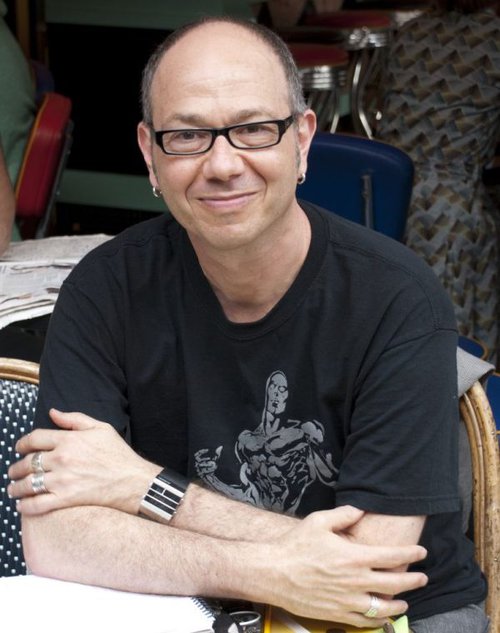Rockets for the Sake of Poetry
Time: Oct. 24, 2024, 4:30 p.m. - 6 p.m.
Location: Life Sciences Atrium

Part of the Syracuse Symposium series.
Kashi and Kameshwar C. Wali Lectures in the Sciences and Humanities - Presented by Eduardo Kac

Members of the Wali family and the Department of Physics, in annual partnership with the Syracuse University Humanities Center, are delighted to welcome artist Eduardo Kac to campus this fall, invited by the BioInspired Institute.
Hosted by the Posthumanities: Arts and Science focus group in the BioInspired Institute, ‘bio-artist’ Eduardo Kac revisits key highlights in his forty-year career, with emphasis on his current space artworks. “Bio-art” entails the crafting of artworks and installations using living matter (e.g., proteins or cells), rather than non-living matter (e.g., acrylic paints), to modify or create living processes.
Kac first gained prominence at the beginning of the twenty-first century with his transgenic work GFP Bunny (2000), in which he used molecular biology to literally create a green-glowing rabbit named Alba. In 2017 Eduardo Kac worked with an astronaut to create an artwork aboard the International Space Station. Kac’s trajectory reads like a long and distinguished list of 'firsts': first telepresence artwork; first human to implant a microchip; first new mammal in the history of art; first artwork made in outer space. He has recently completed Agora, the first transplanetary artwork, which lifted off from Cape Canaveral on January 8th, 2024.
Kac's talk -- which doubles as a feature of this year's Syracuse Symposium on "Community" -- effectively engages multiple communities of scholars: scientists, engineers, artists, policy-makers, and humanists.
Bio: Eduardo Kac is internationally recognized for his groundbreaking work in contemporary art and poetry. In the early 1980s, Kac created digital, holographic and online works that anticipated the global culture we live in today, composed of ever-changing information in constant flux. In 1997 the artist coined the term "Bio Art," igniting the development of this new art form with works such as his transgenic rabbit GFP Bunny (2000) and Natural History of the Enigma (2009), which earned him the Golden Nica. GFP Bunny has become a global phenomenon, having been appropriated by major popular culture franchises such as Sherlock and The Simpsons, and by writers such as Margaret Atwood and Michael Crichton. In 2017, Kac created Inner Telescope, a work conceived for and realized in outer space with the cooperation of French astronaut Thomas Pesquet. Recently, the Vulcan Centaur spacecraft launched Kac‘s holographic sculpture Ágora (1986/2023) into heliocentric orbit. Kac’s singular career spans poetry, performance, drawing, printmaking, photography, artist's books, early digital and online works, holography, telepresence, bio art, and space art. His work has been exhibited internationally at venues such as the New Museum, Pompidou Center, Reina Sofia Museum, Seoul Museum of Art, Korea, and showcased in biennials such as Venice Biennale and Bienal de Sao Paulo, Brazil. His works are in major collections such as Museum of Modern Art-MoMA, The Metropolitan Museum of Art, Tate Modern, and Museum of Contemporary Art of São Paulo, among others.
